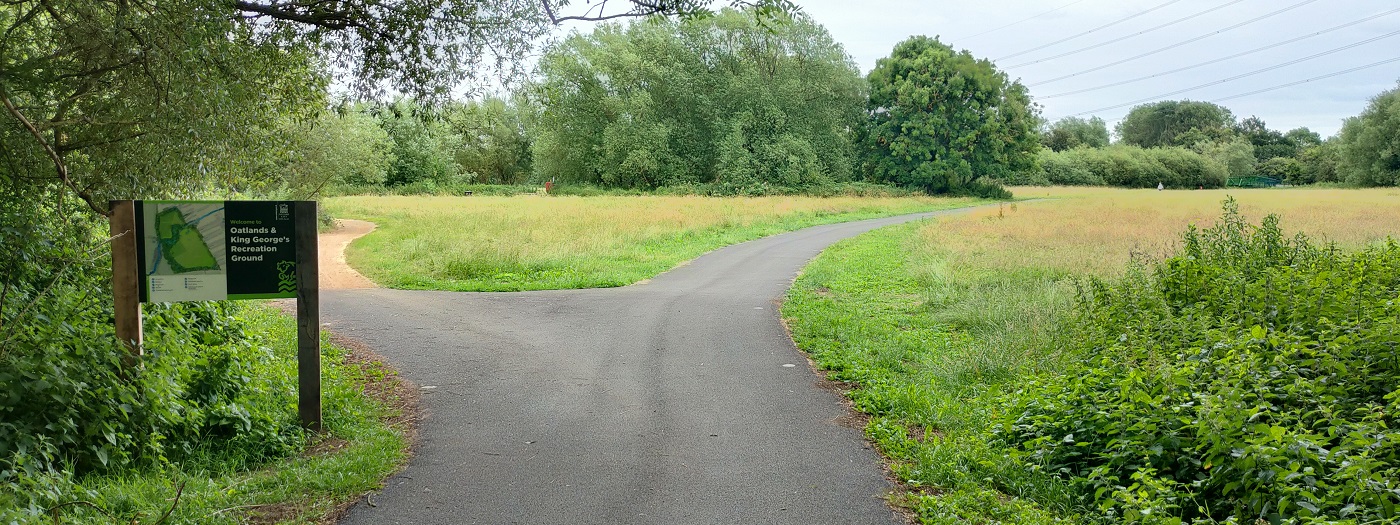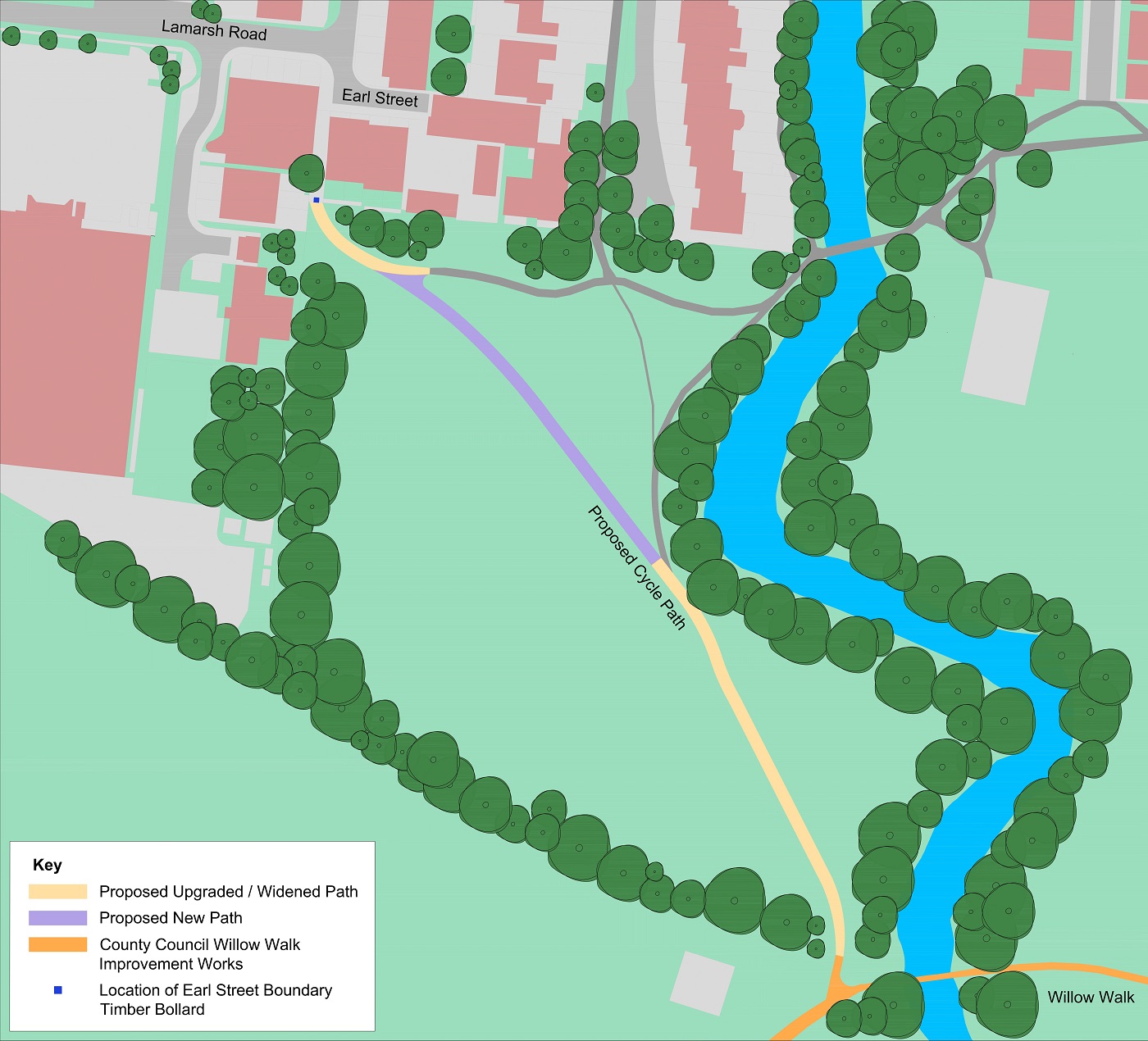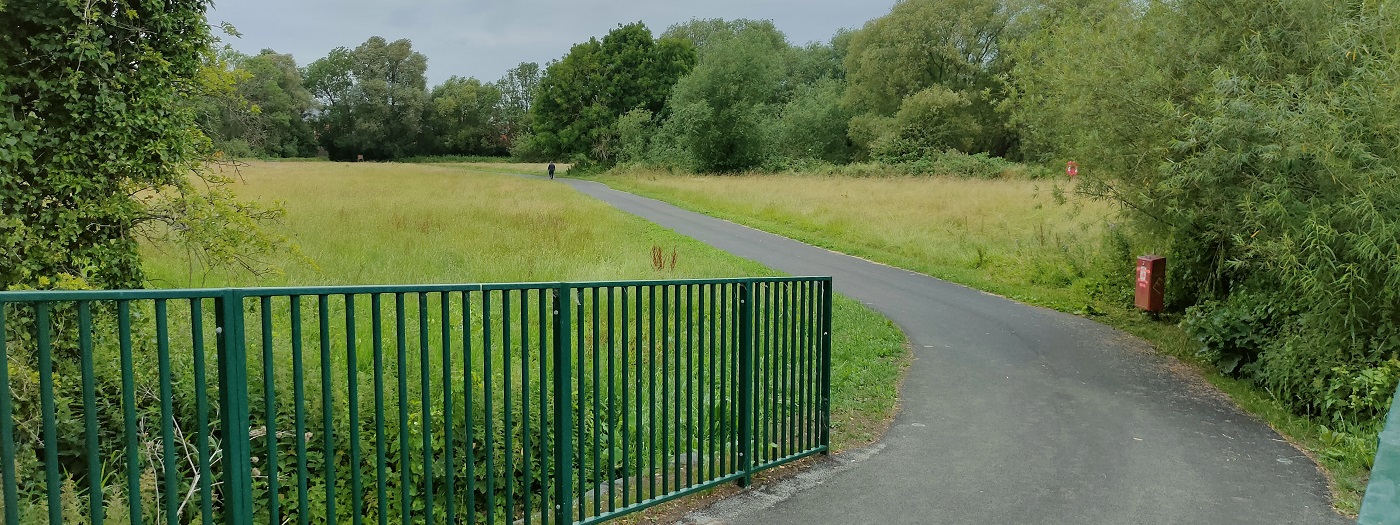
Overview
Oxfordshire County Council had funding to deliver improvements to pedestrian and cycling routes. A proportion of the funding was provided to Oxford City Council to deliver schemes within the city. One scheme identified was the provision of a new shared footpath/cyclepath at King George’s Playing Field.
There was a route between the access at Earl Street and then around the field to Willow Walk. This was used by both pedestrians and cyclists, however corners are often cut for ease of travel. This route ties in a new junction with Willow Walk constructed by Oxfordshire County Council. There was a large rut across the field representing this desire line, and this has now be incorporated into the proposal.
The scheme provides a new all-weather footpath/cyclepath which is wide enough for pedestrians and cyclists to use at the same time. This route runs across the field between Earl Street and Willow Walk, utilising both existing routes and the desire line.
The existing entrance to the field from Earl Street remains in place, including a timber bollard to prevent vehicular access.
Benefits include:
- Provision of a dedicated route for pedestrians and cyclists through the park.
- A more comfortable direct route to cross the park, providing a suitable surface for all weather use.
- Ties in with local cycling network and signed cycle routes.
- Encourages greater use of the playing fields and promotes active travel.
- Designating the path officially as a cycletrack.

Location
View location of King George's Playing Field cycle improvements in Google Maps.
Frequently Asked Questions
Why is a path needed here?
A series of Quiet Connector Active Travel routes have been planned across Oxford to allow residents to walk, cycle and using other forms of active travel away from busy main roads. This scheme improves active travel journeys from Lamarsh Road to Willow Walk.
It ties in and strategically connects with routes OX24/25 and OX23 on the Oxford Cycle and Walking Network for LCWIP.
The new path, designed for both pedestrians and cyclists, will provide a direct, convenient and visually pleasing off road connection between Botley and the City Centre from the South.
Conflict between pedestrians and cyclists
A three metre-wide unsegregated shared-use connecting path is proposed. This will provide sufficient width to reduce the potential for conflict between cyclist and pedestrians. The provision meets current standards and guidance on new cycle provision.
The path is likely to attract a wide range of users, including dog walkers, families, and visitors to the city, all naturally wanting to explore or view the area along the path.
Comments during the public consultation were received regarding the shared use of the path.
Segregating the path into separate lanes for pedestrians and cyclists would result in a wider path that would be more visually intrusive, more impactful on the ecology of the site and involve more materials and associated carbon. It would also be difficult to enforce the segregation.
The legal status of even a segregated footway and cycleway is that pedestrians can use both sides. We want to avoid the potential perception that cyclists have right of way, which may increase cycle speeds and give the impression to pedestrians that the cycleway is an area not permitted for their use.
A “shared” provision is likely to provide a more flexible space in terms of self-enforcement of appropriate speeds at busy times, i.e., people walking across the full width of the path may help prevent cyclists dominating the space.
Lighting
There is currently no lighting at King George's Field and no plans to include lighting within the proposals. This will have the least possible environmental impact. This was mentioned by several respondents during consultation as a reason for not including lighting. However, there are positive benefits from including some form of reflectors alongside the new path. ODS has therefore installed bat-friendly florescent solar stud lighting as part of the scheme.
Impact on Ecology and Trees
Impacts on habitat and species on the site were considered during the development of the path design to minimise disruption to habitats in the field, following advice from an ecology walkover survey.
The location of the path has been sited along existing desire lines and away from the area that has the best quality habitats and trees.
The scheme minimises ecology impacts and no trees will be felled.
During the construction works, appropriate working practices will be implemented to avoid harm to protected species.
Path Design
Due to the sensitive nature of the site, it was felt that the path should follow existing desire lines as it crosses the King Georges Field.
Flooding
Comments were received in the public consultation regarding flooding. Despite recent flooding, it is expected that the formal path will be more resilient if and when flooding occurs at King George’s Field in the future. The design of the path ensures the impacts of flooding will not be increased by the works. The new path will be constructed of porous material and will have a cross fall matching the existing ground.
Maintenance
Upon completion of the path, the path will become the responsibility of Oxfordshire County Council for upkeep and maintenance. The design of the path has been deliberately considered to support the ease of maintenance.
Funding
Funding has been secured from the Oxfordshire Growth Deal Funding, for which the County Council is the accountable body. This funding was awarded to the Oxford City Council to support the delivery of Quiet Connector shared cycle routes.


